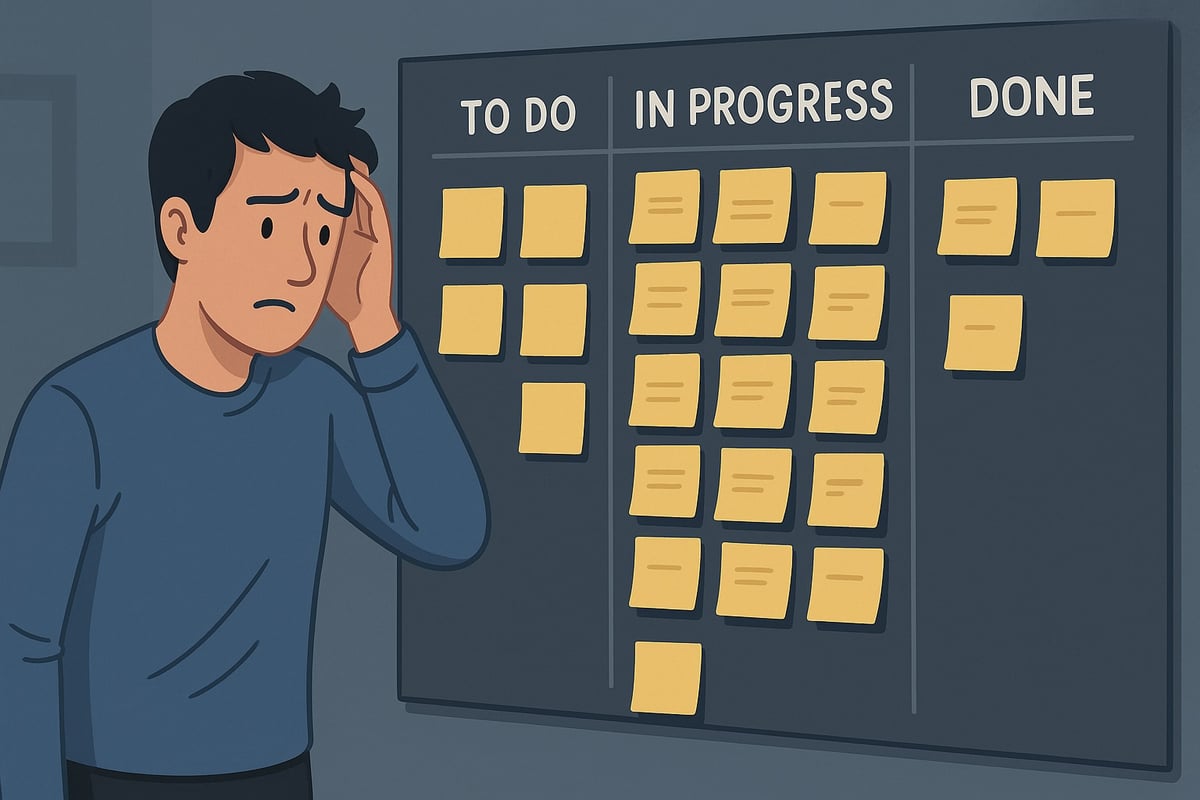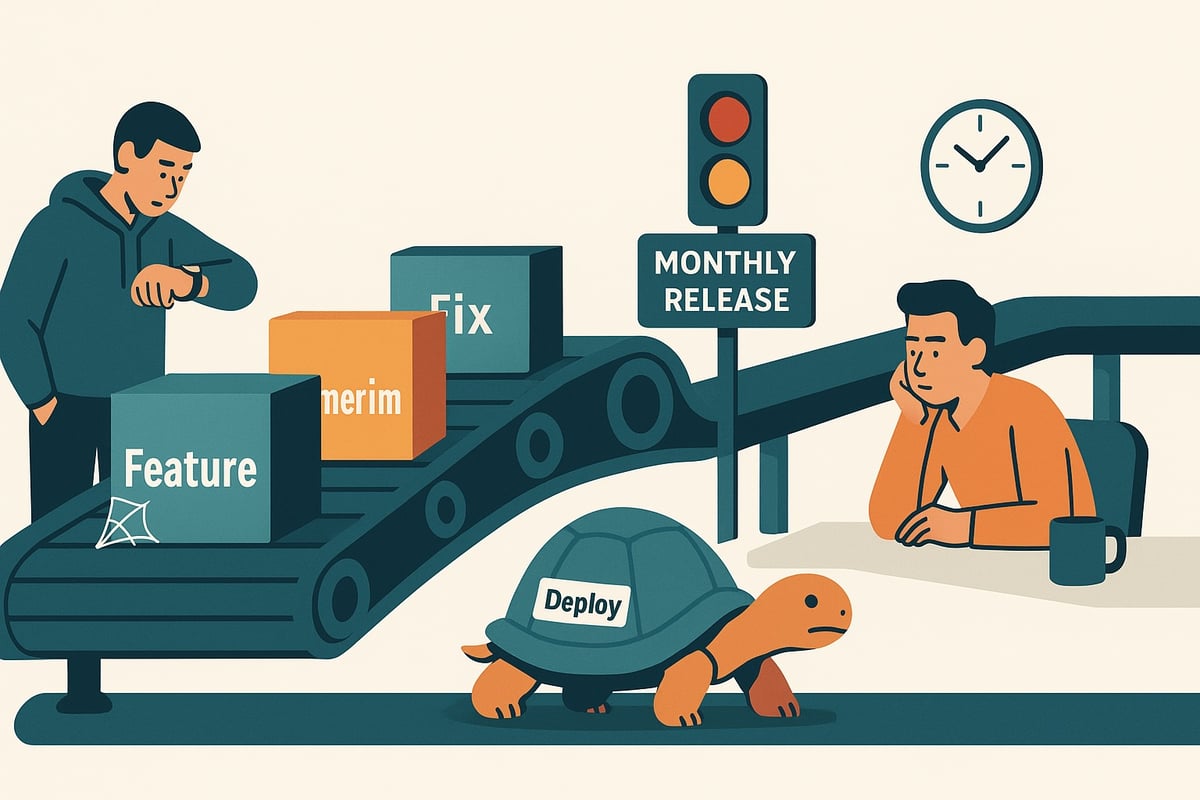As a CTO in a growing startup, you’ve likely experienced that overwhelming sensation of being pulled in a hundred different directions. New features, scaling infrastructure, security concerns, technical debt, talent acquisition all competing for your limited time and resources. I’ve seen startup CTOs finding themselves involved in nearly 80% of all discussions across their companies, leaving them perpetually overwhelmed and struggling to determine what truly deserves their attention.
The reality is that while enterprise CTOs often have the luxury of specialized teams and mature processes, startup CTOs must become masters of prioritization to survive. Your ability to focus on the right initiatives at the right time can be the difference between your company thriving or joining the 90% of startups that fail.
Finding Your North Star: Business Alignment as Foundation
The most effective CTOs establish what former Codelitt CTO Kaio Magalhães calls a “North Star” principle — a guiding principle that shapes all technical decisions. In its simplest form, this North Star connects technical work directly to business outcomes:
“A task that increases either company revenue or the quality of life for my team, where one must not contradict the other.”
— Kaio Magalhães
This alignment transforms prioritization from a vague exercise into a disciplined practice. Every initiative should directly support at least one key business goal:
- Revenue growth: Will this initiative directly enable new sales or expand existing contracts?
- Market differentiation: Does this create unique capabilities that set our product apart?
- Customer acquisition/retention: Will this feature attract new users or prevent existing ones from leaving?
- Investor milestones: Does this support the metrics and goals we’ve committed to our board?
When technical priorities drift away from these business anchors, you risk creating what Nulab describes as “a chaotic mess, prone to bias and distractions”. When this happens, the loudest voice in the room often determines your roadmap, rather than strategic alignment.
Frameworks That Cut Through the Chaos
Once you’ve established your North Star, several frameworks can help you make consistent decisions about which initiatives deserve your attention first:
The Eisenhower Matrix for Engineering
This classic urgency/importance framework adapts beautifully to technical prioritization:
| Urgent | Not Urgent | |
|---|---|---|
| Important | Do First: Critical security vulnerabilities, production outages, compliance deadlines |
Schedule: Strategic architecture improvements, scalability enhancements, technical debt reduction |
| Not Important | Delegate: Minor bug fixes, routine maintenance tasks |
Eliminate: Nice-to-have features without business impact, over-engineering |
This framework helps you distinguish between firefighting (quadrant 1) and strategic initiatives (quadrant 2) that will determine your long-term success.
RICE Scoring Model
For a more quantitative approach, the RICE model allows you to score initiatives based on:
- Reach: How many users/systems/teams will be affected?
- Impact: How substantial is the improvement?
- Confidence: How certain are we about the estimates?
- Effort: How much engineering time is required?
The resulting score creates an objective basis for comparing seemingly incomparable initiatives. That shiny new feature might score lower than the mundane infrastructure upgrade when all factors are considered.
Value vs. Complexity Quadrant
This visual approach plots initiatives based on potential value and implementation complexity:
| Low Complexity | High Complexity | |
|---|---|---|
| High Value | Quick wins that should be prioritized first | Strategic projects that may need to be broken into smaller components |
| Low Value | Fill-in tasks when resources are available | Tasks to avoid or eliminate from the roadmap |
The quadrant creates clarity around those tricky decisions where the business value and technical effort seem misaligned.
Technical Debt: The Balancing Act
Perhaps the most challenging prioritization dilemma for startup CTOs is balancing technical debt with new features. As UdbJørg explains, unaddressed technical debt leads to:
- Slower Development: Teams spend more time fixing issues rather than building features
- Reduced Agility: Accumulated debt limits your ability to pivot or respond to market demands
- Lower Quality: Increased likelihood of bugs and security vulnerabilities
- Increased Costs: The longer debt remains unaddressed, the more expensive it becomes
- Compromised Stability: More susceptibility to failures that harm customer trust
Yet completely halting feature development to address technical debt is rarely viable for startups that need to demonstrate progress to customers and investors.
The most effective approach is finding balance:
- Allocate a fixed percentage of sprint capacity to technical debt reduction
- Prioritize technical debt that directly impacts current business objectives
- Combine technical debt remediation with feature work when possible
- Quantify the impact of technical debt in business terms (engineering velocity, reliability metrics)
A strategic approach is to treat your codebase as a “heat map” to identify areas providing the most value when addressed. Look for code with high churn rates, frequent bugs, or high complexity metrics. These hotspots often yield the highest return when improved.
For a deeper understanding of technical debt’s impact on your engineering velocity, check out our guide on Tech Debt: The Hidden Drag on Your Product Velocity.
Communicating Your Priorities
Even the best prioritization scheme fails if you can’t effectively communicate it. The research is clear that successful CTOs excel at translating technical priorities into business outcomes when speaking to executives.
The term “technical debt” itself serves as a powerful communication tool. As UdbJørg explains, this financial analogy “resonates with business stakeholders, making it easier to justify allocating resources to address these issues.”
When communicating priorities:
- Create visual roadmaps that link technical initiatives to business goals
- Use a common vocabulary for discussing priorities across the organization
- Support decisions with metrics and data whenever possible
- Schedule regular priority reviews with key stakeholders to adapt to changing needs
For strategies on effectively communicating engineering metrics to executives, see our post on Metrics That Matter: Translating Engineering Performance for the C-Suite.
Not Just What, But What Not To Do
In startups, where resources are always constrained, effective prioritization is as much about deciding what not to do as what to do.
The most successful CTOs maintain clear boundaries using frameworks like the MoSCoW method, which explicitly identifies “won’t have” items alongside priorities. Maintaining a “won’t do” or “not now” list forces the difficult but necessary conversation about trade-offs and creates clarity for the team about where to focus their energy.
When deciding whether to build in-house or leverage existing solutions, our guide on Build vs. Buy: The Million Dollar Decision for Engineering Teams can help you make informed choices that align with your prioritization strategy.
Building a Culture of Empathy and Accountability
Beyond frameworks and processes, effective prioritization ultimately depends on fostering the right culture. When technical teams deeply understand user needs and the business impact of their work, priorities become clearer.
Encourage your engineers to:
- Participate in customer interviews and support sessions
- Understand how their work contributes to key business metrics
- Feel empowered to question priorities that don’t align with user needs
- Take ownership of outcomes, not just outputs
This cultural shift transforms prioritization from a top-down exercise into a shared responsibility that permeates the organization. For guidance on empowering your team while maintaining appropriate control, see our article on Delegation Without Abdication.
The Path Forward
As your startup scales, your approach to prioritization must evolve. What worked at five engineers won’t work at fifty. Regularly revisit your frameworks, adjust for changing business needs, and refine your communication strategies.
Remember that prioritization is a skill that improves with deliberate practice. Start with a clear North Star aligned with business objectives, adopt a structured framework that fits your culture, and communicate priorities in terms that resonate with both technical and non-technical stakeholders.
By doing so, you’ll navigate the complex landscape of competing priorities, ensure focus on high-value initiatives, and effectively communicate how your technical decisions support the business success that ultimately matters most.
What prioritization framework works best in your organization? I’d love to hear your experiences.








